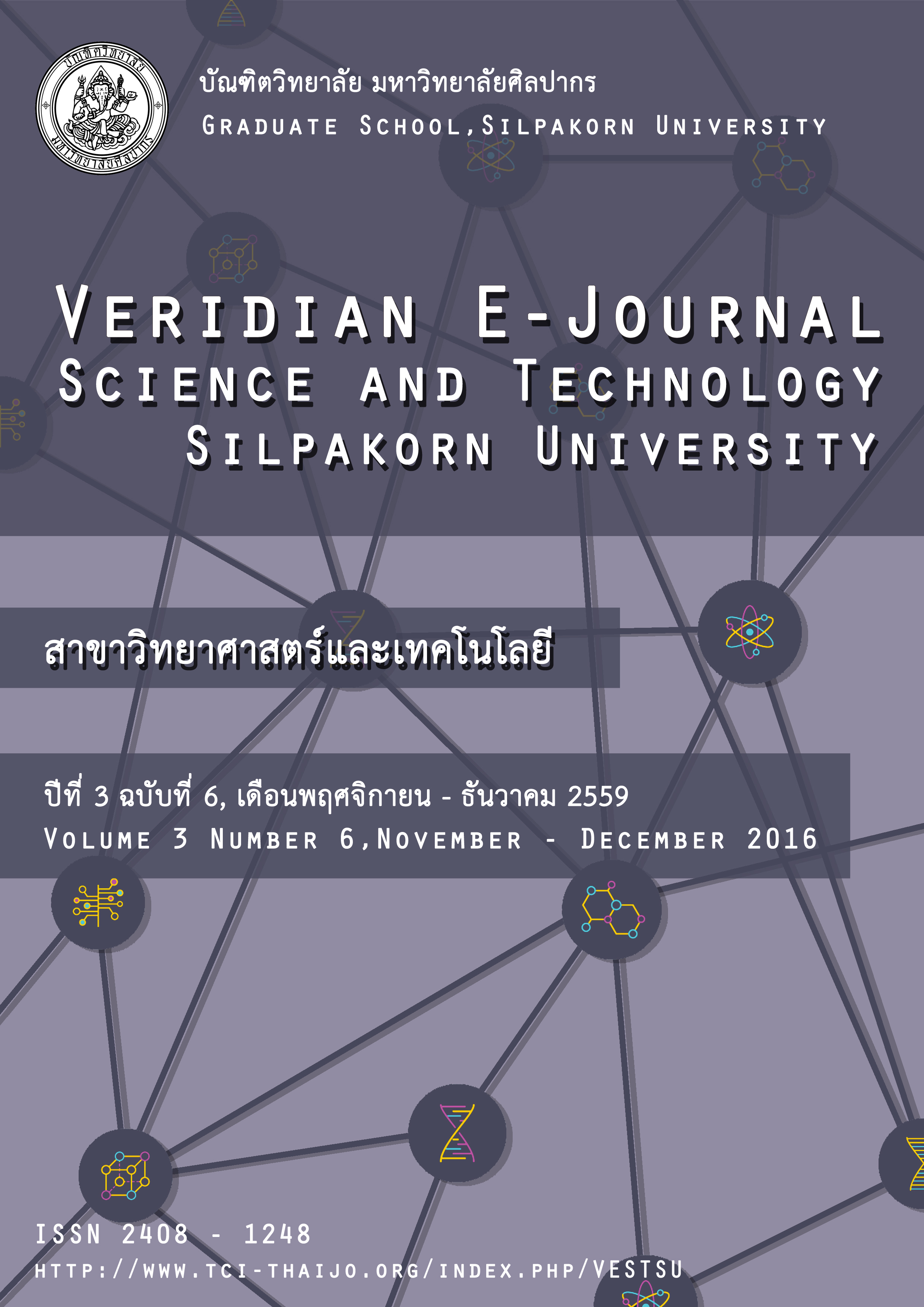Surface modification of cotton by tetraethylorthosilicate and tetrabutyltitanate
Main Article Content
Abstract
To obtain the hydrophobic water repellant characteristics, cotton fabrics were treated by the following seven combinations: TEOS_SA, TEOS_Cl-TMOS, TEOS+Cl-TMOS, TBOT_SA, TBOT_Cl-TMOS, TBOT_SA (50 oC) and TBOT_Cl-TMOS (50 oC). The hydrophobicity of the treated cotton fabrics was tested by dropping a small droplet (0.05 mL) of water on the surfaces. It was found that the water droplet was stable longer than 2 hours in the case of cottons coated by TEOS+Cl-TMOS, TBOT_SA, TBOT_Cl-TMOS, TBOT_SA (50 oC) and TBOT_Cl-TMOS (50 oC). However only cottons treated by TBOT_SA, TBOT_Cl-TMOS and TBOT_Cl-TMOS (50 oC) retained their hydrophobicity after being washed by detergent. The contact angles of these cotton samples were measured. It was found that the best coating solution to give highly hydrophobic cotton was TBOT_Cl-TMOS (50 oC). Raising the temperature of the TBOT solution may increase the rate of the hydrolysis and condensation processes on the cotton surface. Moreover the hydrophobization process using Cl-TMOS solution at 50oC may increase the bond formation between hydroxyl groups of TiO2 surface and methoxide groups of Cl-TMOS.
Article Details
Section
บทความ : Science and Technology

